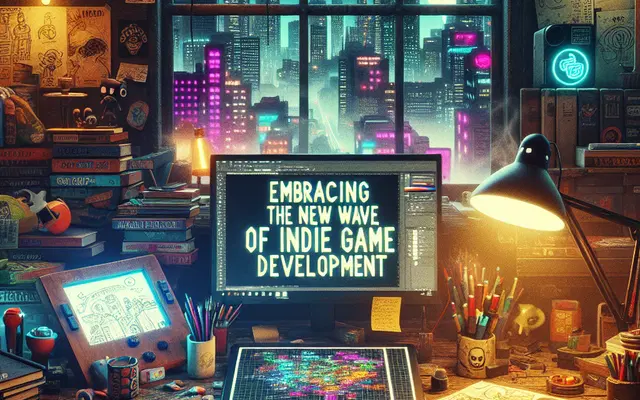Harnessing Creativity in Game Design: Spotlight on Indie Game Development

The Rise of Indie Game Development
Indie game development has emerged as a powerhouse in the video game industry, offering a fresh and diverse perspective compared to the often formulaic approaches of larger studios. Riding on the wave of digital distribution platforms, indie developers have found an avenue to showcase their innovative ideas without the constraints of traditional publishing. This autonomy has led to the creation of games that are not only unique but are also often reflective of the developers' personal stories, thereby enriching the gaming landscape with a plethora of distinct and intimate experiences.
The heart of game design within the indie space lies in its boundless creativity. Unhindered by the pressure of meeting mainstream expectations, indie developers have the freedom to experiment with novel concepts, gameplay mechanics, and storytelling techniques. This environment of exploration fosters a culture where risks are encouraged, and originality thrives. As a result, indie games often serve as incubators for new trends and innovations that eventually influence the broader industry.
With each passing year, new releases from indie studios continue to captivate and surprise gamers, solidifying indie game development's role in shaping the future of gaming. These titles frequently punch above their weight, delivering experiences that can rival those of blockbuster games in terms of engagement and emotional impact. They challenge traditional narratives and gameplay formulas, paving the way for a gaming revolution that prioritizes creative freedom and artistic expression over commercial success.
Fostering Creativity in Game Design
Indie game development represents a new frontier for creatives in the gaming industry. Freed from the constraints of large studio agendas, indie developers have been pushing the boundaries of game design, exploring innovative mechanics and narratives that larger companies may deem too risky. This creative liberation is not only refreshing the industry but also offering gamers new experiences that challenge the conventions of mainstream gaming.
Fostering creativity in game design is essential to keep the medium evolving. In the world of indie game development, small teams and solo creators often take on a deeply personal approach to their projects. This can result in games that are not just entertaining, but also deeply reflective of the developers' own experiences, aspirations, and artistic visions. Through this intimate connection between creator and creation, indie games often resonate with audiences in powerful, unexpected ways.
The recent surge in intriguing new releases is a testament to the vibrant future of gaming shaped by indie developers. Games like 'Hollow Knight' and 'Celeste' have received critical acclaim for their innovative design and compelling storytelling. These games, along with other notable indie titles, are paving the way for future developments in the industry, showcasing the immense potential of small-scale projects to leave a large-scale impact on players worldwide.
New Releases Shaping the Future of Gaming
The landscape of gaming is continually evolving, shaped by the ingenuity of indie developers who dare to experiment and innovate. Recent game releases from the indie scene exhibit a deft blend of storytelling, mechanics, and art that push the boundaries of what games can be. These titles not only offer unique experiences to players but also serve as inspiration to the entire gaming industry, demonstrating that creativity is not bound by scale or budget.
Indie game development thrives on freedom—freedom to explore new themes, create diverse characters, and question conventional gameplay. This has led to a surge in innovative game releases that defy genre categorizations and refuse to adhere to traditional gaming formulas. Such games often come with rich narratives and intricate worlds that engage players in ways that mainstream titles sometimes overlook, highlighting the influence of indie titles in shaping future gaming trends.
As the indie game development sector grows, it becomes a more significant force in the future direction of game design. New indie releases frequently become the subject of widespread discussion and critical acclaim, setting new standards for what independent studios can achieve. By embracing risks and prioritizing creative expression, these indie games serve as catalysts for change, encouraging even the most established developers to revisit their creative processes.
To truly harness creativity in game design, it's essential to pay attention to the indie games that are redefining the landscape. These releases, often crafted by small teams with limited resources, prove that innovation isn't solely the domain of major studios. They remind us that sometimes, the most groundbreaking ideas come from the most unexpected places, setting new precedents for storytelling, gameplay, and player engagement.












